Tricolour Dango: A Bilingual Cooking Activity Guide
The advantages of translated children’s books, and an easy activity to put it into practice!
I’ve realised that we’ve never shared how to use books to talk and learn about other cultures. So, this Spring, we’re sharing ways to make Chinese learning more engaging by taking a look at how the season is celebrated in Japanese culture!
Here’s a fun fact: more than half of the books we stock are translations! Some of the original languages include Japanese, Korean, English, German and French.
This is actually one of the things we look for when we’re curating books because I want to offer our customers a range of different authors from different backgrounds, beliefs and cultures. Reading a wide range of books by different authors gives children the opportunity to learn about other perspectives.
So here’s a quick blog to share how we explored a little aspect of Japanese culture from a tiny food book, called The Many Lives of Dango 《团子花样多》!
A Japanese snack they eat during the sakura blooming season.
You might have seen the emoji before: 🍡 — this is a tricolour dango!
From our little book, we learn that dango is a versatile Japanese snack made from glutinous rice flour! Tricolour dango is simply one of the many variations of ‘dango’. Other times they’re wrapped in a leaf, or toasted lightly with a sweet glazing, or enjoyed under a full moon during Tsukimi.
Today, we’re using a tricolour dango recipe from one of my favourite YouTube channels, Kimono Mom (Moe, and her daughter Sutan)! But, as I mentioned before, we’re going to be using this cooking and tasting activity for some Mandarin Chinese immersion!
I’ve highlighted key action and object words to help you copy this activity at home. We hope you find this useful and fun!
Let’s cook! A spring activity to learn about Japanese culture. 🌸
TIP: For any activity, action words are your best friend! After that, think about other key words and objects.
To make our tricolour dango, we used:
230g glutinous rice flour
150g silken tofu
3 tbsp sugar (you may add more if you prefer a sweeter taste!)
A little water
Food colouring and matcha powder (unfortunately we didn’t have sakura powder…)
Some short skewers (we cut long wooden skewers in half)
And we followed along with Moe’s video:
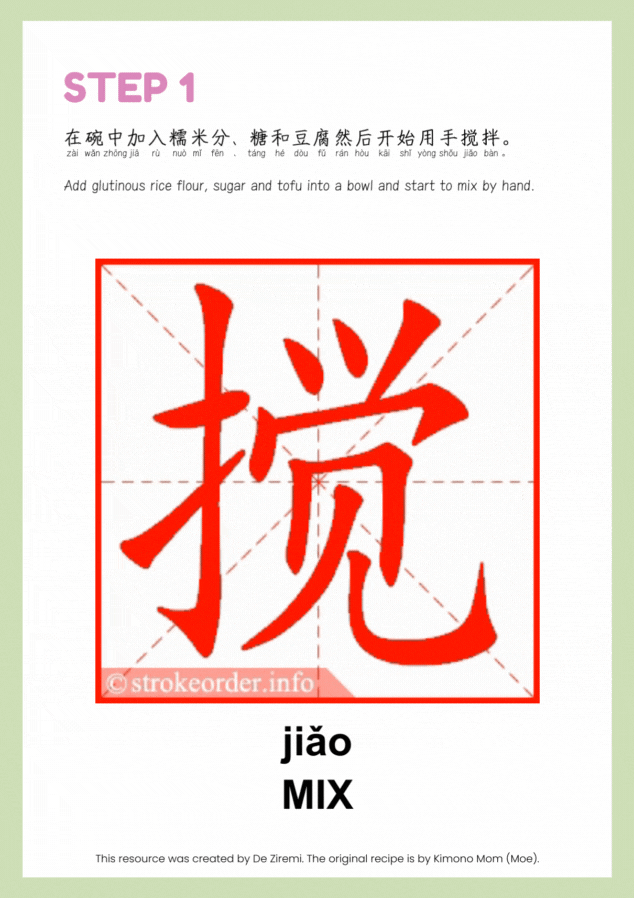
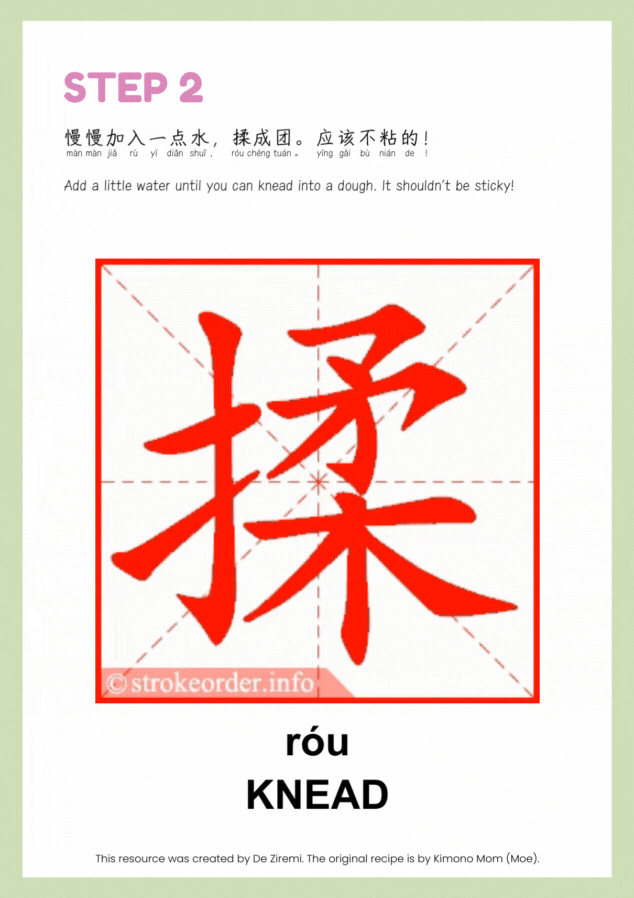
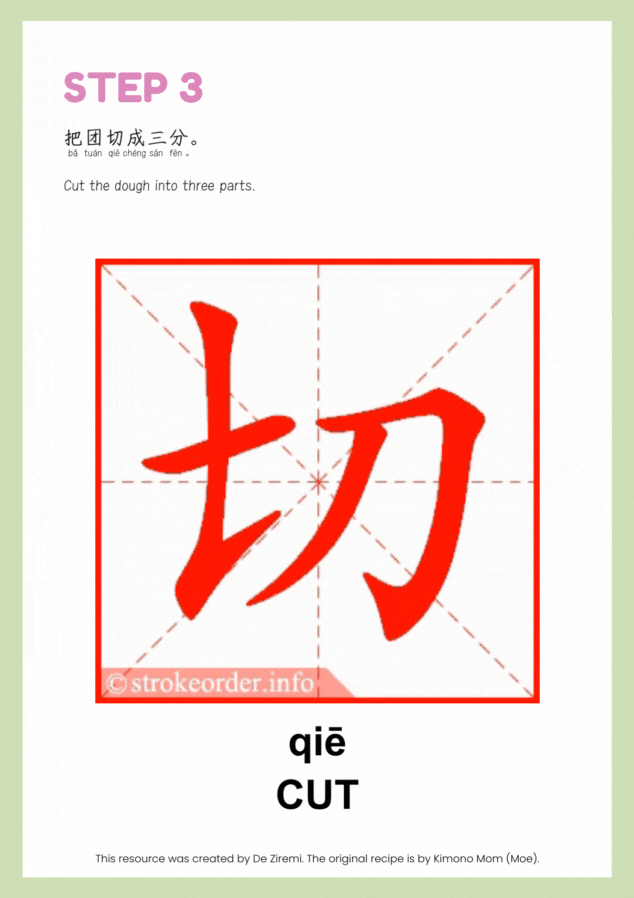
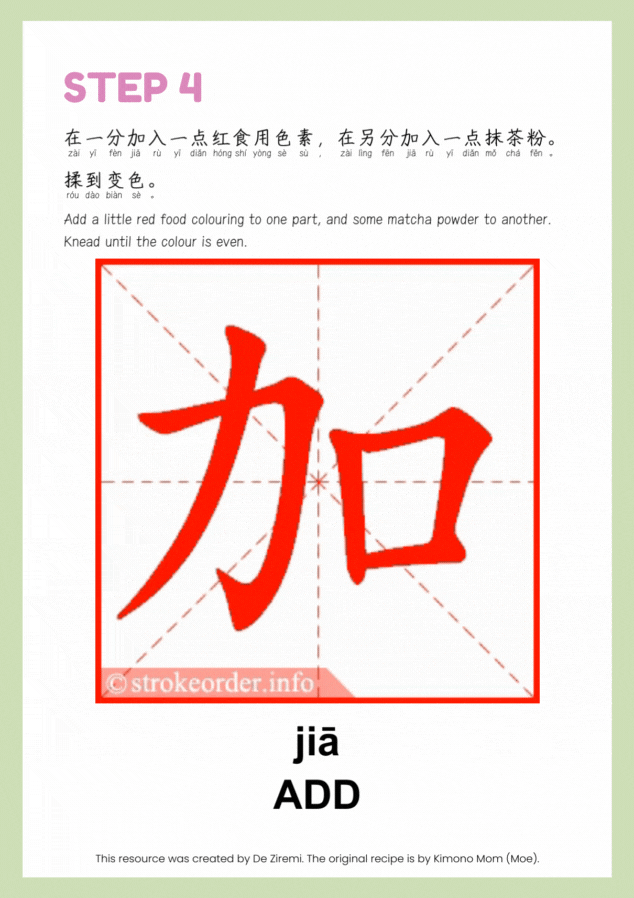

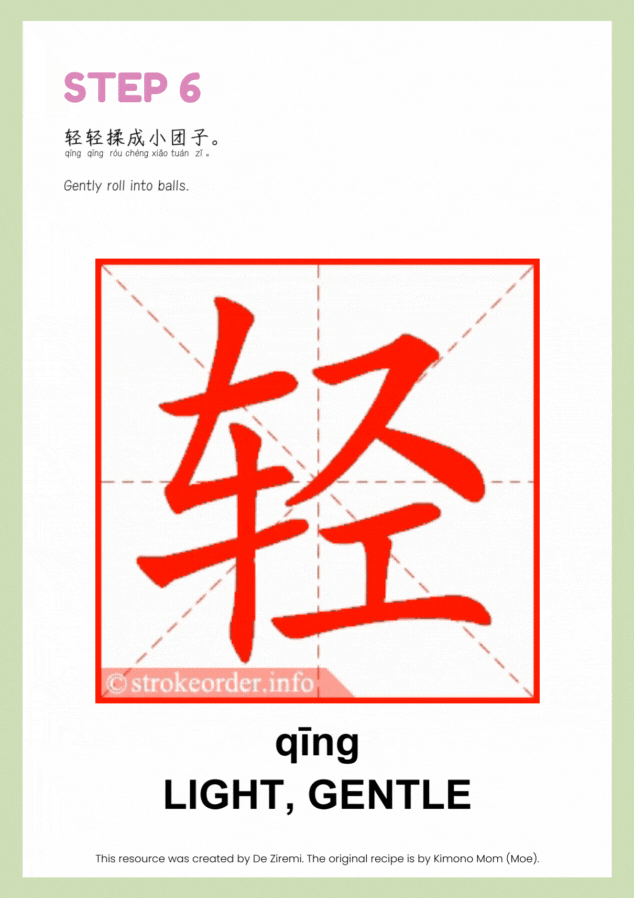
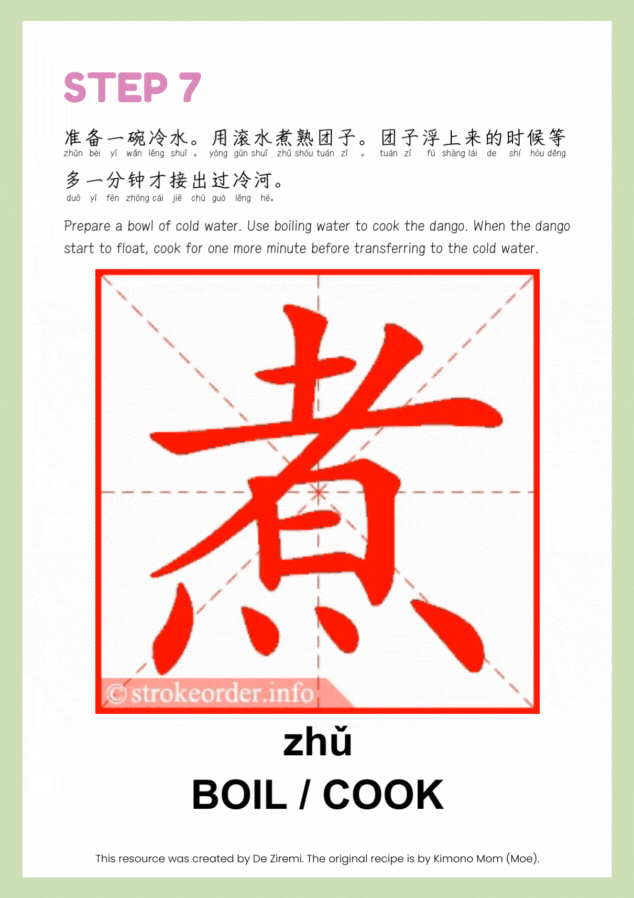
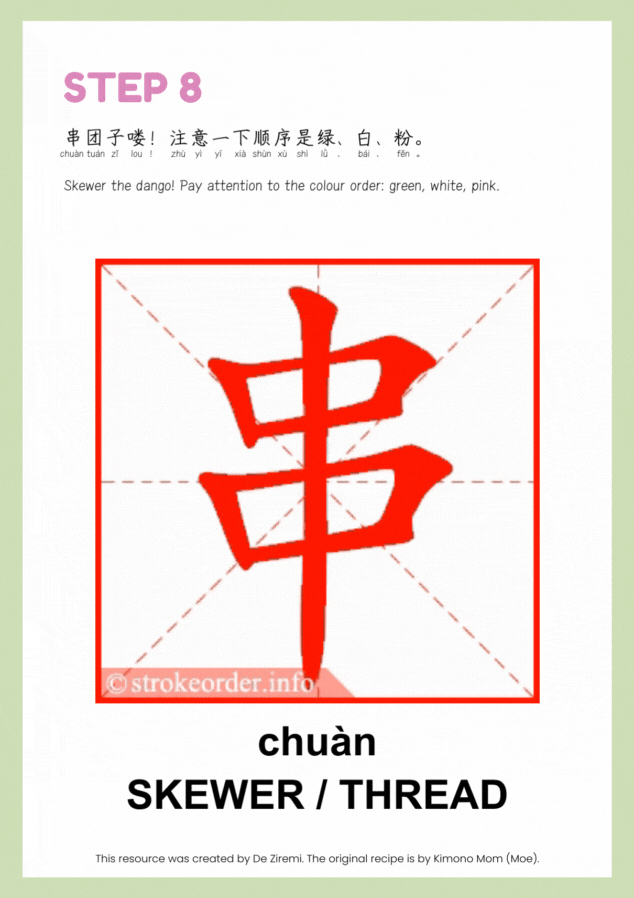
Take a bite and see if you like it! It has a very chewy texture with a subtle sweetness. We personally loved them because they remind us of tang yuan (汤圆)! I hope we’ll be able to enjoy them under some sakura trees one day…
Of course, while you’re eating the food, this is a great time to talk about the symbolism too. According to Moe, there are a different ways of explaining it but the one that she talked about most (and the one I focused on sharing with the children) is like this:
I really enjoyed this interpretation of the colours because it’s almost like a mini story and felt very appropriate for the spring season (during which we even get to see some blossom trees in the UK!).
That’s pretty much it! The children enjoyed a simple cooking activity and we loved eating up all the dango. We’ll probably be making more over the Easter holidays because they were pretty popular and were also easy enough to make. As for now, that’s the end of our short little exploration of Japanese culture through tricolour dango. We hope to share more blogs like this in the future! Is there any topic/food/culture that you would like to see? Let us know!
If you like this little idea and would like to try it for yourself at home, feel free to go ahead and try! I’d definitely recommend watching the full video from Kimono Mom about the tricolour dango, too. If you do try this activity out at home, share it with us! We’d love to see and hear how you’re practising Chinese through a bilingual activity.


